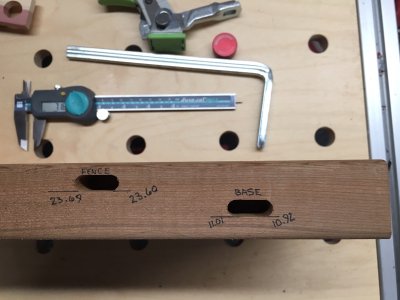I will offer this advice, and it has been offered before over the years. I am glad that you are taking it back. I can't imagine that anyone would really be trusting of that tool and would always be second guessing themselves with every plunge. With the amount of money spent, and the amount of time and effort to work things out, whereas Festool's policy allows for it without questions, starting afresh with a new tool might just be the thing to eliminate doubt and wash out any bad taste, let alone hopefully produce more accurate mortises.
If it were me, I wouldn't bother with taking in a sample board or doing test mortises there.
I hope we read that the new tool rewards your exchange with perfect mortises soon!
Peter
If it were me, I wouldn't bother with taking in a sample board or doing test mortises there.
I hope we read that the new tool rewards your exchange with perfect mortises soon!
Peter

